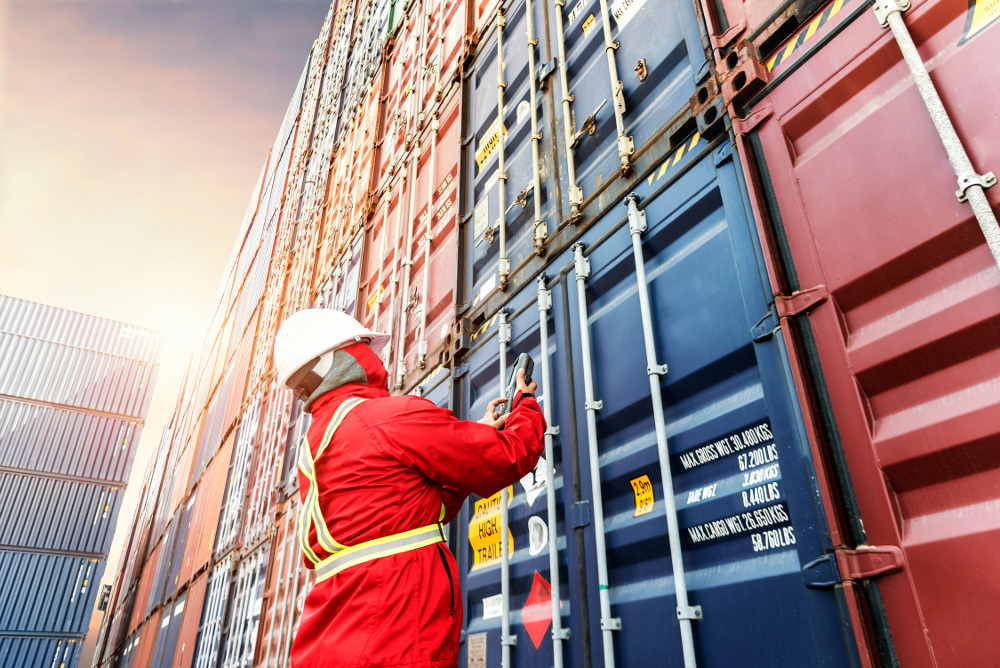How Many Shipping Containers are Out There?

If you look closely around you, shipping containers are everywhere. You see them on trains, stacked up on sea vessels, moving peoples’ belongings, sitting around as extra storage, and even repurposed as building materials. With so many shipping containers moving goods around the world and being used for on-site storage, an interesting question arises: how many shipping containers are out there in the world?
The short answer is we don’t know for sure. But a very broad estimate is that there are anywhere between 5 million and 170 million shipping containers globally. Below, Porta-Stor will take a closer look at how we can get a better estimate on the total number of shipping containers out there.
Shipping Containers by the Numbers
While some containers are still in use for regular shipping purposes, many are not. Millions of shipping containers are sitting unused and deteriorating or being repurposed for other uses. Since there are so many containers being used for so many purposes in all parts of the world, how can we really count the amount of shipping containers out there? Let’s take a look at the available numbers of in use, no longer in use, and brand new shipping containers:
Containers In Use - If a shipping container is dubbed ‘in service,’ it’s being used to haul freight from one location to another. It’s hard to get a completely accurate number of containers in service, as companies do not like to publish this information because of industry competition. To get a rounded figure of shipping containers in use, it’s easiest to look at the leasing companies that hold these containers. Between the leasing companies and the goods companies, there’s an estimated 50/50 split on total containers. Since the leasing companies had a rounded number of 32.9 million in 2012, this is also roughly what the shipping companies had on hand as well. These numbers total at around 65 million ‘in-service’ containers.
Containers No Longer In Service - This is a hard number to pin down, since these containers are sold every day to the likes of businesses and schools for storage purposes. Other containers go to the junkyard and sit unused completely, while still others are torn apart for their materials to be recycled.
One way to get a good guess on this number is to look at how long a shipping container is actually in use - an average of 10-12 years. The problem with this method is with the definition of a non-used and a used container. Using these containers as a wall to keep out trespassers could be called a use by some people, but others would call it a non-use.
Putting this type of argument aside, here is the math on the number of non-use shipping containers: If there are 23 million containers in use for an average of 8 years, we can assume that there are around 14 million shipping containers no longer in use. This number includes containers sitting as storage on a person’s land or those repurposed for new uses.
Brand New Shipping Containers - This is also a hard number to pin down. Some companies like to order new shipping containers from China and have them sit in a warehouse unused. New containers like these are not always owned by the company itself or a leasing company, leaving them to sit dormant much like the ex-service ones. Some companies will buy new containers and then sell them off to another company, moving them along before they can be counted as a new shipping container. Using the figures of containers bought from China and those sold to other countries, there are an estimated 300,000 new shipping containers added to the global fleet each year.
Looking at all of these rough estimates, we can give some ‘How Many’ numbers here for the amount of TEU (twenty foot equivalent unit) containers:
- 23 to 38.5 million TEU ‘in-service’ containers
- 14 to 23.3 million TEU ‘ex-service’ containers
- 6 to 10 million TEU brand new containers
With a total of 43 to 72 million TEU containers total globally.
The Reality in the Numbers
One factor that’s much more certain than these estimated numbers is that the amount of shipping containers in the world will only continue to grow in the foreseeable future. The reason for this is that with ever-expanding globalization and trade, the shipping container logistics industry is growing rapidly. As this market develops, there will be even more shipping containers being created and sold into the market. Even though these containers are recyclable by traditional means, there are more and more uses coming to light that offer great repurposing options for them.
To learn more about how the shipping container business could be changing in the near future, check out Porta-Stor’s blog on how blockchain technology and cryptocurrencies could affect the industry.
